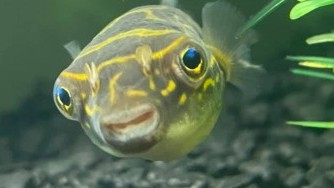Jellyfish: do you think you can keep one?
- Jan 26, 2021
- Anshika Mishra
- 1224 0 0

Do you want a pet Jellyfish?
The concept of keeping a Jellyfish in the home is a relatively new one. There are various differently designed tanks for the same. These tanks are designed so that the Jellyfish will have a constant circular current to keep them from sinking to the bottom, and these tanks are kept empty without any rocks to the substrate so that nothing can tear their delicate bodies.
If they are damaged, however, don't worry. They have a remarkable ability to heal even from the most severe injuries. Jellyfish are babe magnets, and there is something about that squishy little blobs which people love.
Fishes v/s Jellyfish
But do know that they require quite an incredible amount of work for long-term success, but they give your literally nothing back. On the other hand, fishes seem to appear in their surroundings and get excited to see us, which makes us feel valued for our hard work. Some people think that they are the world's most ungrateful pet.
Jellyfishes have no ears, eyes, brain, nose, or heart, and they are made up of 95% water. This is the exact amount of water proportion find in cucumber have.
These organisms might look pretty basic, but that doesn't mean that they are easy to care for. When it comes to keeping them in the aquarium, there are various species available to us. The common of them is the moon Jellyfish. It is not very dangerous for humans, and we cannot feel their sting at all.
Keeping the water stable is the key!
As with all creatures kept in the tank, Moon Jellyfish requires excellent water quality to thrive. Technically they can survive in less than perfect conditions for some time, including a higher tolerance to ammonia, which would kill most other aquatic species.
This doesn't mean that they are healthy, though. Long-term exposure to a high level of Ammonia and Nitrate can result in shorter tentacles, weaker pulsing, a flat belly, and mortality.
Despite this tolerance, they can be susceptible to change in salinity, pH, and temperature. So, while doing your water change, it is essential to make sure that these match the aquarium water perfectly, also make sure that there are no undissolved crystals in the new water.
Something else to be careful of while doing water change is bubbles. Bubbles caught underneath the bell can cause serious harm to jellies as they struggle to dislodge them, which can eventually lead to death.
Assuming you have mastered the art of keeping water stable. The next thing to focus on is their feeding requirements.
Feeding Requirements
In the wild, these creatures are appropriately lazy, where they bump into their prey. The pray is then stung is incredibly fine tentacles, which are covered in stinging cells. The food caught around the edge then moves along their arms, mouth and finally settles in one of their four stomachs.
Correct feeding is the key to keep them alive for a longer time, but it is where most people go wrong. There are two methods of feeding, and each has its pros and cons.
Dry Food
- Pros: The majority of people try to feed dry food. There are various Jellyfish food brands in the market, and it is essentially just an excellent powder that is easy for them to catch and digest. This is by far the most convenient option as you mix it with water and pour it in.
- Cons: The negative side of this is that it will pollute the water much quicker than the alternative, which is live food
Live Food
- Pros: The people that tirelessly hatch brine shrimp to ensure that their Jellyfish haves an abundance supply of live food, which in turn doesn't spoil the water quality, also appear to be the people that have the tremendous success in keeping them alive.
- Cons: This process is more labor-intensive, but it also reduces the amount of maintenance you need to do. So, there appears to be a trade-off with either additional cleaning or breeding.
Whichever way you choose, the feeding process is pretty straightforward. All you need to do is squirt your food in the tank away from the Jellyfish and let the flow take it to them. Siphon-out any uneaten food afterward.
It is recommended to feed them at least once a day. However, a smaller amount 2-3 times a day is preferred.
The final answer
So, to answer the question, do you want a Jellyfish. If you are willing to put any effort into keeping them in optimum condition, they can be fascinating to observe. However, after the novelty has worn off, to keep up with them is a bit of grind, and because they give you nothing back, you can get a pretty similar effect using a plastic bag or a lava lamp.






About author